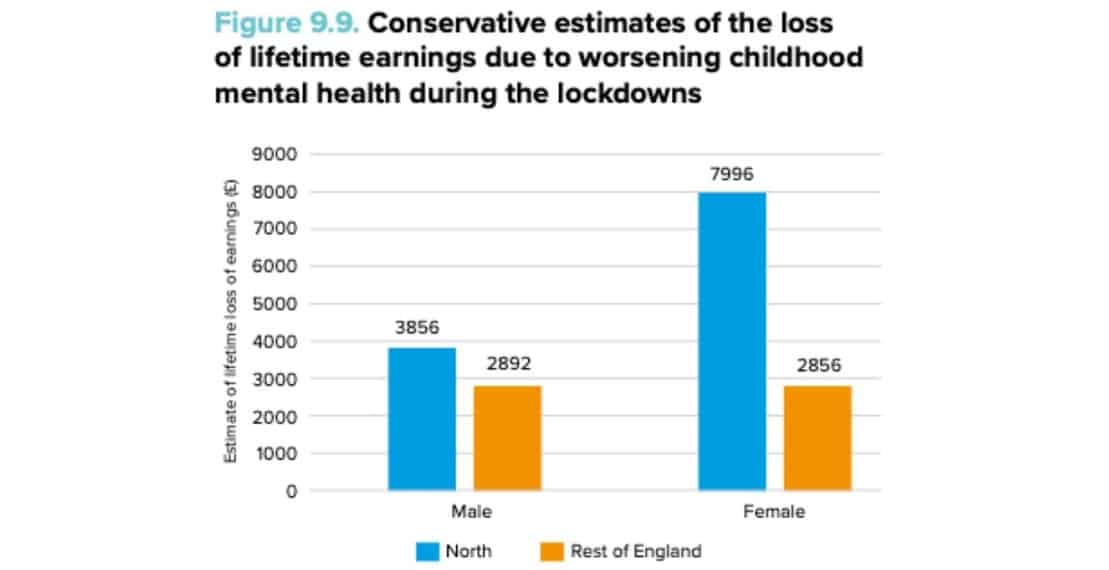Kate Pickett ponders how social scientists can bring structural inequalities to light when media focus on individual lives.

Epidemiologists and public-health researchers tend to work at scale. Although, as with doctors, our work is aimed at uncovering the causes of disease and death, our focus is a population rather than an individual patient. We deal in incidence and prevalence rates, often expressed in units such as deaths per 100,000 or cases per million.
We thus speak the language of statistics—the percentage of people affected by an illness or the average impact of a risk factor for disease—rather than the stories of individual lives. That may make a lot of people switch off or turn the page, preferring a ‘human interest’ story to what they see as dry facts and figures. Yet just as a picture can say a thousand words, a statistic can speak for a thousand lives—and when we turn away from them, to pay more attention to the story, we risk misplaced reactions and responses.
Shocking numbers
Throughout the second half of 2021, I jointly led an effort by more than 40 researchers across the north of England to examine the effect of the Covid-19 pandemic on the health and future wellbeing of children in the region. Although we had originally planned a short report, with brief sections on topics such as mental health, children in care and educational attainment, we found a wealth of data, scattered across institutions and academic disciplines. When this was pulled together, it told a compelling story of how profoundly the pandemic was piling on top of pre-existing inequalities to threaten the life chances of around three million children and young people.
Our report contained some (even to us) shocking statistics and big numbers. We found that children in the north of England lost four times as much learning in mathematics as their counterparts in London and the south-west of the country. We estimated that increases in mental-health problems during the pandemic would cost children in the north the equivalent of £13.2 billion across their lifetimes, while the loss of learning in school would cost them £24.6 billion. Children in the north were already more likely to be living in poverty but the gap between north and south—addressed by the prime minister, Boris Johnson, with his ‘levelling up’ rhetoric, on which concrete proposals have however been repeatedly delayed—was growing.
It felt like a big news story to us and we prepared user-friendly summaries and infographics of our findings and top policy recommendations. While we did get some media attention when we released our report in December, much of it was however local.
Yet children were very much in the news that week, with reports on child abuse and neglect headlining every news broadcast and newspaper front page. Sadly, those reports focused on just two children, both of whom had tragically lost their lives at the hands of their parent’s partners. A six-year-old boy had been tortured and killed by his father, convicted of manslaughter, and his stepmother, convicted of murder. And a 16-month-old girl had been killed by her mother’s girlfriend, also found guilty of murder, also after horrific long-term abuse.
The criminal convictions in both cases coincided with the launch of our report. Both children’s stories were, of course, horrifying and heart-breaking. But should they have swamped a story of millions of lives blighted by poverty, inequality and deprivation? Who decides what news we see and how do they decide what it is important that the public should know?
Innovative model
In her 2015 book, Saving the Media: Capitalism, Crowdfunding and Democracy, Julia Cagé, associate professor of economics at Sciences Po, Paris, put forward an innovative new model for the media. She proposed that media companies should be independent of owner barons, shareholders, advertisers and private interests generally. They should instead be non-profit organisations, where readers, journalists and the public would drive the news agenda and together—perhaps through crowdfunding—create the resources to pursue it.
Similarly, in his 2010 book, Return of the Public: Democracy, Power and the Case for Media Reform, the publisher and journalist Dan Hind proposed reforming the media through the public commissioning of journalism. Hind argues that the media are ‘structurally unable to describe reality when doing so would present serious problems for powerful actors’.
Croatia actually experimented with this in 2013, with journalists proposing stories they wanted to investigate, the public choosing which should go ahead and the journalists being paid from the national lottery to pursue them. But the experiment was short-lived: the Commission for Non-Profit Media in the country was decommissioned by an incoming culture minister in 2016. Recently in Scotland, a ‘public-interest journalism institute’ has been proposed to the government there.
What if the public aren’t very interested in serious investigative journalism, addressing issues of social justice and public interest? What if they prefer the salacious story, the scandal, the shocking exposé of individual bad behaviour? It is interesting that Wikipedia defines a ‘human-interest story’ as one that discusses people (or pets!) in an emotional way, whereas the consensus seems to be that ‘public-interest journalism’ is the pursuit of information which the public have a right to know, rather than what they need or want to know.
Critical appetite
This is a complex problem which requires multiple solutions. We need to ensure that our education systems produce citizens who are scientifically, includingly social-scientifically, literate—able to consume rigorous, factual, documentary media with a critical appetite. Think how helpful that would have been throughout the pandemic.
We also need more active participation in civic life. There has been an increasing disengagement of the public from mainstream politics—a sense that politics is distant from people’s day-to-day lives, that it has become the pursuit of an ‘elite’ alone—which has fed the rise of populism. If the public feel that politics is not for them, why would they take an interest in serious news about issues when, even if they are so inclined, they believe nothing will happen and they cannot be part of making change?
There is, of course, a responsibility as well upon those of us who produce research, statistics and reports to which we hope the public, policy-makers and politicians will pay attention. We are obliged to communicate clearly, hook our statistics to compelling stories and make them come alive for readers and consumers of news. We need to develop, or harness, skills in infographics, video, animation and more, including via new collaborations.
If I say that 10.7 per cent of children in the north of England are obese at school entry, compared with 9.6 per cent elsewhere in England, I can imagine eyes glazing over. But if I were to say that reducing the costs of obesity in lost future productivity could mean freeing up to €11,000 to spend on every single child—and then told some stories about how transformative that investment could be for children, real or imagined—that might secure public attention. It might even inspire campaigning for the public-health interventions which politicians should make happen.
So that’s been my new year’s resolution for 2022—to use data, research and statistics to tell human-interest stories, worthy of public attention.
This is a joint publication by Social Europe and IPS-Journal
Kate Pickett is professor of epidemiology, deputy director of the Centre for Future Health and associate director of the Leverhulme Centre for Anthropocene Biodiversity, all at the University of York. She is co-author, with Richard Wilkinson, of The Spirit Level (2009) and The Inner Level (2018).

